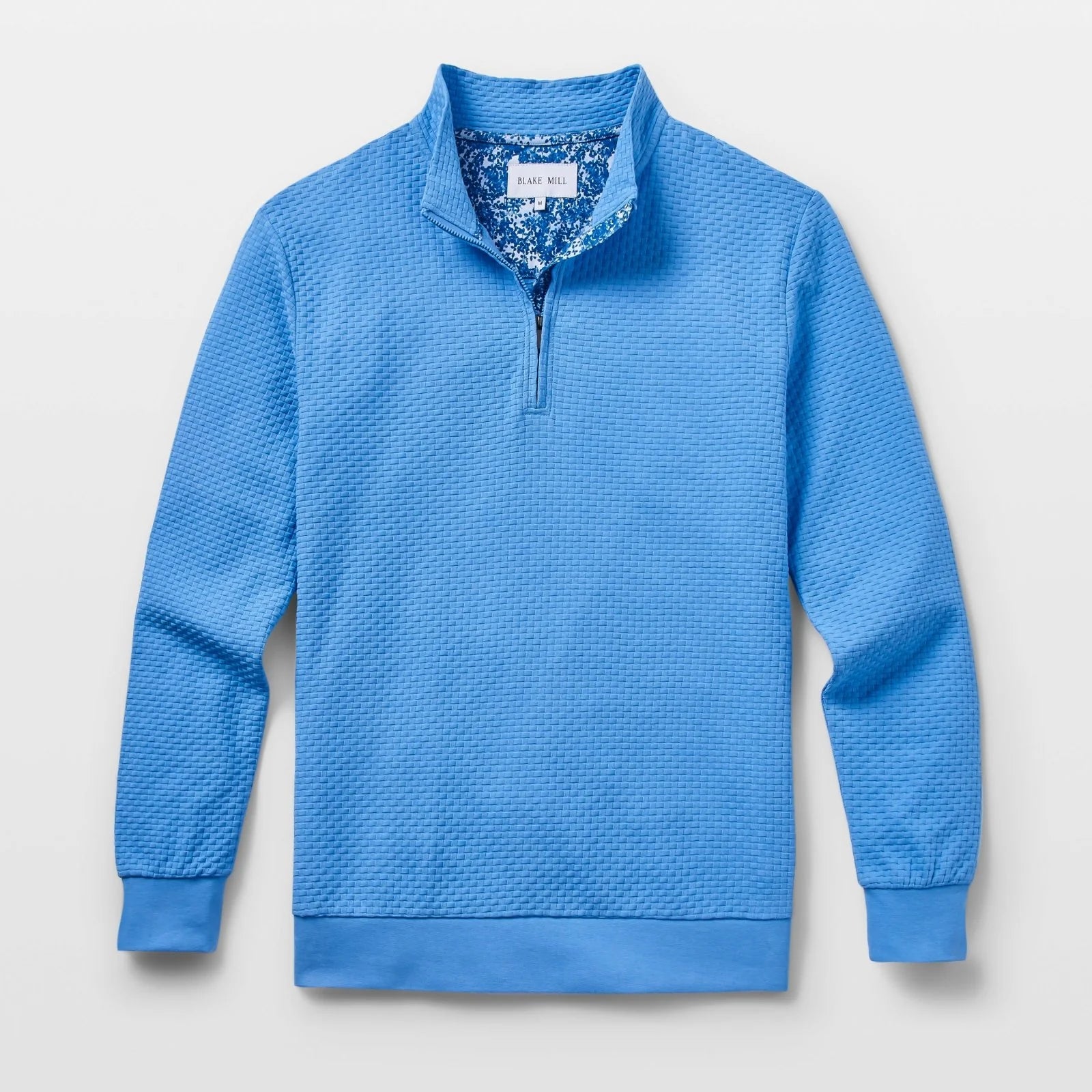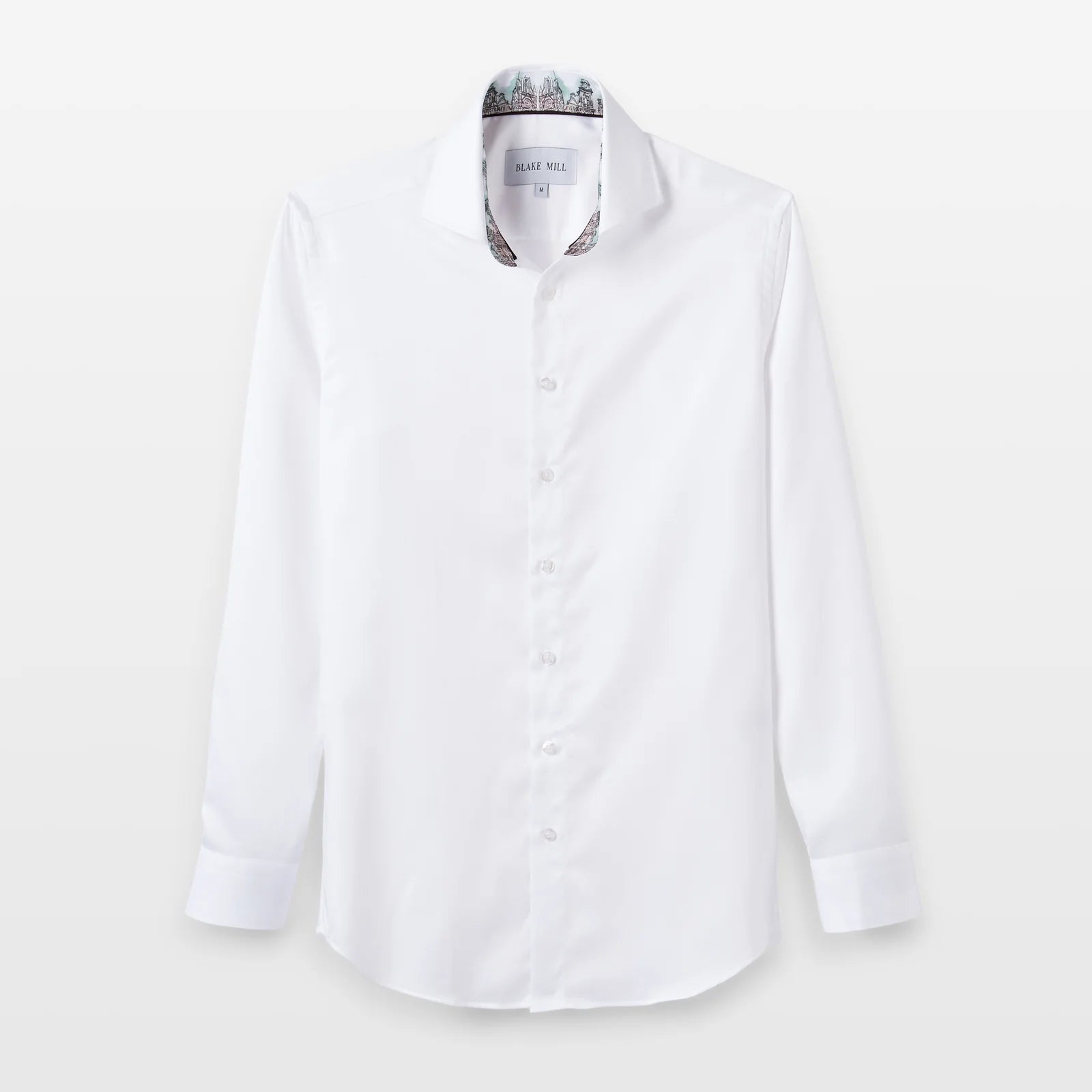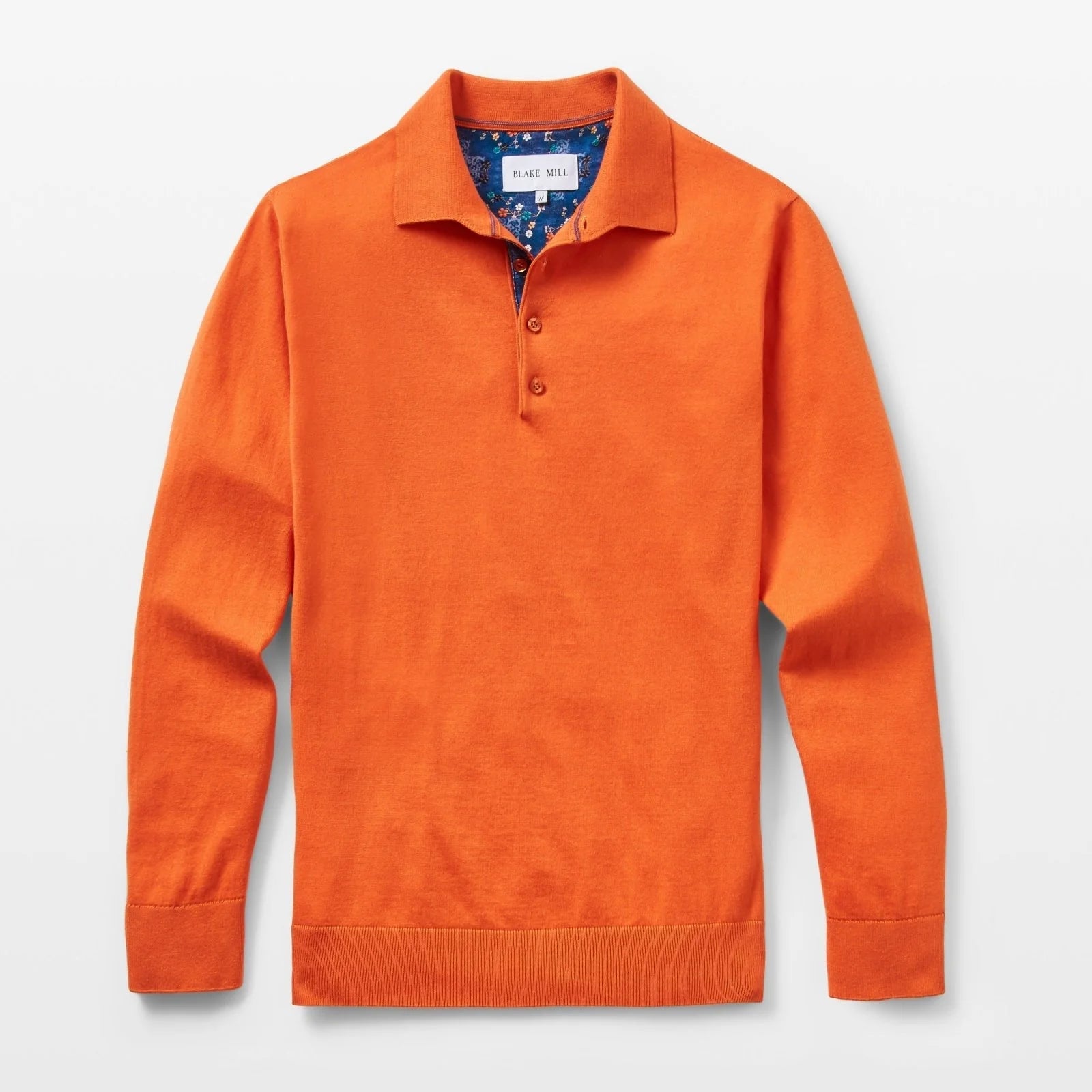Mastering Men's Knitwear Care: Washing & Storage Tips
Understanding Knitwear Materials
When it comes to mastering men's knitwear care, understanding the different materials used is key. From cosy wool to luxurious cashmere and synthetic fibres, each material has its own unique characteristics and care requirements. Wool, known for its warmth and durability, is a popular choice for knitwear. Cashmere, on the other hand, is prized for its softness and luxury feel. Synthetic fibres, such as acrylic and polyester, are often blended with natural fibres to enhance durability and reduce shrinkage. By knowing the properties of each material, you can ensure proper care and maintenance of your knitwear collection.
The Basics of Wool, Cashmere, and Synthetic Fibres
Wool, cashmere, and synthetic fibres are the three main types of materials used in men's knitwear. Wool is a natural fibre derived from sheep's fleece. It is known for its excellent insulation properties, durability, and ability to wick away moisture. Cashmere, on the other hand, is made from the fine hairs of cashmere goats. It is incredibly soft, lightweight, and provides exceptional warmth. Synthetic fibres, such as acrylic and polyester, are man-made materials that are often blended with natural fibres to enhance durability and reduce shrinkage. While synthetic fibres may not have the same luxurious feel as wool or cashmere, they are more affordable and easier to care for. Understanding the basics of these materials will help you choose the right knitwear for your needs and ensure proper care and maintenance.
Identifying Your Knitwear's Unique Needs
Each piece of knitwear has its own unique needs when it comes to care and maintenance. Before washing your knitwear, it's important to identify any specific care instructions provided by the manufacturer. Look for labels or tags that indicate whether the garment is machine washable, hand wash only, or dry clean only. Additionally, consider the thickness and construction of the knitwear. Chunky knits may require more gentle handling, while finer knits may be more prone to stretching. By understanding the unique needs of your knitwear, you can tailor your care routine to ensure longevity and preserve the garment's appearance.
Pre-Wash Care for Longevity
Proper pre-wash care is essential for maintaining the longevity of your mens knitwear. Before tossing your garments into the washing machine, take the time to sort your knitwear. Separate dark and light colours to prevent colour bleeding and fading. Check the care instructions on the garment's label to determine the appropriate water temperature and washing cycle. For stubborn stains, spot cleaning techniques can be used to target specific areas without subjecting the entire garment to a full wash. By taking these pre-wash care steps, you can help ensure that your knitwear stays in excellent condition for years to come.

Sorting Your Knitwear Before Washing
Sorting your knitwear before washing is an important step in caring for your garments. Here are some tips to help you properly sort your knitwear:
- Check the care instructions on each garment's label to determine if it should be washed separately or with other items.
- Separate dark and light colours to prevent colour bleeding and fading.
- Group knitwear of similar weights and textures together to prevent damage during the washing process.
- Consider using a laundry bag or pillowcase to protect delicate knitwear from snagging or stretching.
- Avoid washing heavily soiled knitwear with lightly soiled items to prevent dirt and oils from transferring.
- By properly sorting your knitwear, you can ensure that each garment receives the care it needs and minimise the risk of damage during the washing process.
Spot Cleaning Techniques for Stubborn Stains
When it comes to stubborn stains on your knitwear, spot cleaning can be a useful technique to target specific areas without subjecting the entire garment to a full wash. Here are some spot cleaning tips to help remove common stains from knitwear:
- Blot the stain with a clean cloth or paper towel to remove any excess liquid or debris.
- Apply a small amount of mild detergent or stain remover directly to the stained area.
- Gently rub the detergent into the stain using a soft cloth or sponge.
- Rinse the area with cool water to remove any remaining detergent.
- Repeat the process if necessary until the stain is removed.
- Remember to always check the care instructions on your knitwear's label before spot cleaning and test any cleaning products on a small, inconspicuous area first to ensure compatibility with the fabric.
Washing Men's Knitwear Properly
Properly washing men's knitwear is essential for maintaining its quality and longevity. Whether you choose to hand wash or machine wash your knitwear, using the right techniques and products is key. Hand washing is generally gentler on knitwear and allows for more control over the washing process. Machine washing can be convenient, but it's important to use the appropriate settings and laundry detergents. Avoid harsh detergents that can strip the natural oils from the fibres and opt for mild, wool-specific detergents instead. By following the proper washing techniques, you can keep your knitwear looking its best for years to come.
Hand Washing vs. Machine Washing Tips
Hand washing and machine washing are the two main methods for cleaning men's knitwear. Here are some tips to help you decide which method is best for your garments:
- Hand washing: Fill a basin or sink with cool water and add a mild detergent specifically formulated for wool or delicate fabrics. Gently agitate the garment in the water, avoiding any excessive scrubbing or wringing. Rinse with cool water until the water runs clear. Gently squeeze out excess water without twisting or wringing the fabric. Lay the garment flat on a clean towel and reshape it as needed. Allow it to air dry away from direct heat or sunlight.
- Machine washing: Read the care instructions on the garment's label to determine if it is machine washable. Use a gentle cycle and cool water. Place the garment in a mesh laundry bag to protect it from snagging or stretching. Add a small amount of mild detergent specifically formulated for wool or delicate fabrics. Avoid using fabric softeners or bleach. After the wash cycle is complete, remove the garment from the machine and gently reshape it. Lay it flat on a clean towel to air dry.
- By following these hand washing and machine washing tips, you can safely clean your knitwear and extend its lifespan.
Detergents and Conditioners for Different Fibres
Choosing the right detergents and conditioners for different knitwear fibres is crucial to maintain their quality and softness. Here are some recommendations for different types of fibres:
- Wool: Look for mild detergents specifically formulated for wool or delicate fabrics. Avoid using harsh chemicals or bleach, as they can damage the fibres. Wool conditioners can be used to restore softness and prevent static cling.
- Cashmere: Use gentle detergents designed for cashmere or delicate fabrics. Cashmere conditioners can help maintain the softness and prevent pilling.
- Synthetic fibres: Mild detergents formulated for delicate fabrics are suitable for synthetic fibres. Avoid using fabric softeners or bleach, as they can affect the fabric's properties.
- It's important to read the care instructions on your knitwear's label and follow the manufacturer's recommendations for the best results.
Water Temperature and Its Effects on Knitwear
The water temperature plays a crucial role in maintaining the quality of men's knitwear. Here's how different water temperatures can affect your garments:
- Cold water: Cold water is generally recommended for most knitwear, as it helps minimise colour fading and shrinkage. It is especially suitable for delicate or wool garments.
- Warm water: Warm water can be used for slightly soiled knitwear. It helps to remove dirt and oils more effectively than cold water. However, avoid using hot water, as it can cause shrinkage and damage the fibres.
- Hot water: Hot water should be avoided for most knitwear, as it can cause shrinkage, felting, and damage to the fibres. Only use hot water if specifically recommended by the care instructions on the garment's label.
- Always refer to the care instructions on your knitwear's label to determine the appropriate water temperature for washing. Following the recommended water temperature will help maintain the quality and appearance of your knitwear.
Drying and Reshaping Knitwear
Properly drying and reshaping men's knitwear is essential to prevent shrinkage and distortion. Here are some tips to help you dry and reshape your knitwear:
- Flat drying: Lay your knitwear flat on a clean towel or drying rack to dry. Gently reshape the garment as needed to maintain its original shape and dimensions. Avoid hanging or twisting the garment, as it can cause stretching or distortion.
- Blocking: For more delicate or tightly-knit garments, blocking can help reshape them after washing. Lay the garment flat on a blocking mat or towel and use pins to stretch it to its desired shape. Allow it to air dry completely before removing the pins.
- By following these drying and reshaping techniques, you can ensure that your knitwear maintains its shape and appearance.
Flat Drying to Preserve Shape
Flat drying is the recommended method for drying men's knitwear to preserve its shape and prevent stretching or distortion. Here's how to properly flat dry your knitwear:
- After washing, gently squeeze out excess water from the garment without twisting or wringing it.
- Lay a clean, dry towel flat on a surface and place the knitwear on top of the towel.
- Carefully reshape the garment to its original shape and dimensions, smoothing out any wrinkles or creases.
- Allow the garment to air dry naturally, away from direct heat or sunlight. Do not hang or twist the garment, as this can cause stretching or distortion.
- Check the garment periodically as it dries to ensure that it is not losing its shape. Reshape as needed.
- By following these flat drying techniques, you can help your knitwear maintain its shape and quality for longer.
Avoiding Shrinkage and Distortion
Shrinkage and distortion are common concerns when it comes to drying knitwear. To avoid these issues, follow these tips:
- Avoid using hot water for washing, as it can cause shrinkage.
- Gently squeeze out excess water from the garment after washing, without twisting or wringing it.
- Lay the garment flat on a clean towel to air dry, reshaping it as necessary to maintain its original shape and dimensions.
- Avoid hanging or twisting the garment, as this can cause stretching and distortion.
- Check the garment periodically as it dries to ensure that it is maintaining its shape. Reshape as needed.
- By taking these precautions, you can help prevent shrinkage and distortion, and keep your knitwear in excellent condition.
Storage Solutions for Knitwear
Proper storage is crucial for maintaining the quality of men's knitwear. Here are some storage solutions to keep your knitwear in excellent condition:
- Folding vs. hanging: Knitwear is best stored folded to prevent stretching. Avoid hanging knitwear, as it can cause the garment to lose its shape over time.
- Preventing moths and other pests: Store knitwear in airtight containers or garment bags to protect against moths and other pests. Cedar balls or lavender sachets can also help deter pests.
- Ideal conditions for long-term storage: Store knitwear in a cool, dry place away from direct sunlight, as exposure to heat and sunlight can damage the fibres. Avoid storing knitwear in damp or humid environments, as this can lead to mould or mildew growth.
- By following these storage solutions, you can help preserve the quality and lifespan of your knitwear.
Folding vs. Hanging: Best Practices
When it comes to storing men's knitwear, folding is generally the preferred method. Here are some best practices for folding and storing your knitwear:
- Fold knitwear neatly to avoid unnecessary creases and wrinkles. Start by laying the garment flat on a clean surface.
- Fold the sleeves towards the back of the garment and then fold the sides towards the centre.
- Gently roll the garment from the bottom up, taking care not to stretch or deform the fabric.
- Store folded knitwear in a drawer or on a shelf, away from direct sunlight or heat sources.
- Avoid hanging knitwear, as it can cause the garment to stretch and lose its shape over time.
- By following these best practices for folding and storing your knitwear, you can keep it looking its best and extend its lifespan.
Preventing Moths and Other Pests
Moths and other pests can wreak havoc on men's knitwear. Here are some tips to prevent infestations and protect your garments:
- Store knitwear in airtight containers or garment bags to create a barrier against pests. Avoid using plastic bags, as they can trap moisture and promote mould growth.
- Use natural remedies such as cedar balls or lavender sachets to repel moths and other pests. Place them in your storage containers or hang them near your knitwear.
- Regularly inspect your knitwear for signs of moth or pest damage, such as small holes or insect larvae. If you notice any signs, take immediate action to prevent further damage.
- Consider freezing your knitwear for a few days before storing it, as this can kill any potential pests or eggs.
- By following these preventative measures, you can protect your knitwear from moths and other pests and ensure its long-lasting quality.
Ideal Conditions for Long-Term Storage
Proper long-term storage conditions are crucial for maintaining the quality of men's knitwear. Here are some ideal storage conditions for knitwear:
- Temperature: Store knitwear in a cool environment, ideally between 50°F (10°C) and 68°F (20°C).
- Humidity: Maintain a humidity level between 40% and 60%. Excessive humidity can promote mould or mildew growth, while low humidity can lead to dryness and brittleness.
- Light: Keep knitwear away from direct sunlight, as it can cause fading and damage to the fibres.
- Air circulation: Ensure proper air circulation in the storage area to prevent stagnant air and moisture buildup.
- Additionally, consider using airtight containers or garment bags to protect your knitwear from dust, moths, and other pests. Regularly inspect your garments for any signs of damage or infestation, and take appropriate measures to address the issue. By providing the ideal storage conditions, you can ensure the longevity and quality of your knitwear.
|
Condition |
Ideal Range |
|
Temperature |
50°F (10°C) to 68°F (20°C) |
|
Humidity |
40% to 60% |
|
Light |
Avoid direct sunlight |
|
Air circulation |
Ensure proper air circulation |
Seasonal Knitwear Care Tips
Caring for men's knitwear can vary depending on the season. Here are some seasonal care tips to keep your knitwear looking its best:
- Transitioning between seasons: As the weather changes, gradually transition from heavier knits to lighter ones to ensure comfort and prevent overheating.
- Refreshing after storage: Before wearing stored knitwear, gently shake or lightly steam the garment to remove any wrinkles and freshen it up.
- By following these seasonal care tips, you can ensure that your knitwear is appropriate for the weather and maintains its quality throughout the year.
Transitioning Knitwear Between Seasons
Transitioning men's knitwear between seasons is essential for staying comfortable and stylish. Here are some tips for transitioning your knitwear:
- Gradually swap heavier knits for lighter ones as the weather becomes warmer. This allows you to adapt to changing temperatures without sacrificing comfort.
- Layering is key. Pair lightweight knits with breathable fabrics, such as linen or cotton, to create versatile outfits that can be adjusted throughout the day.
- Consider the colour palette. Transitioning from dark, winter-themed colours to lighter, more vibrant shades can help create a fresh look for the new season.
- By following these tips, you can seamlessly transition your knitwear between seasons while staying stylish and comfortable.
Refreshing Knitwear After Storage
After storing men's knitwear, it's important to refresh the garments before wearing them to ensure they look their best. Here's how to refresh your knitwear after storage:
- Gently shake or lightly steam the garment to remove any wrinkles or creases that may have formed during storage.
- Use a fabric freshener or deodorising spray to eliminate any musty odours that may have developed.
- Inspect the garment for any signs of damage or pest infestation. If you notice any issues, address them before wearing the garment.
- Allow the garment to air out for a few hours before wearing it to ensure it is fresh and ready to be worn.
- By following these steps, you can ensure that your knitwear is in top condition and ready to be enjoyed after storage.
When to Seek Professional Knitwear Repair
While some repairs can be done at home, there are instances when it's best to seek professional knitwear repair services. Here are some scenarios where professional assistance may be needed:
- Complex repairs: If your knitwear has intricate designs, complex knits, or delicate details, it's best to leave the repairs to professionals who have the expertise to handle such garments.
- Damage to valuable or sentimental pieces: If your knitwear holds sentimental value or is of high monetary worth, it's best to entrust it to professionals to ensure the repairs are done correctly and with care.
- By seeking professional knitwear repair, you can ensure that your valuable or intricately designed garments are repaired to the highest standard and can continue to be enjoyed for years to come.
Frequently Asked Questions
How Often Should I Wash My Knitwear?
The frequency of washing your knitwear depends on factors such as sweat, odour, and dirt accumulation. However, as a general rule, it's best to wash cashmere and wool knitwear every 3-4 wears, while synthetic fibre knitwear can be washed more frequently. Always check the care instructions on the garment's label for specific guidance.
Can I Iron My Knitwear?
It is generally not recommended to iron knitwear, especially delicate fabrics like cashmere or wool, as it can cause damage and stretching. If ironing is necessary, use a low heat setting and place a thin cloth between the iron and the knitwear to protect it.
Tips for Removing Pills from Knitwear
To remove pills from knitwear, use a fabric shaver or a sweater comb. Gently run the shaver or comb over the pilled areas to remove the pills. Avoid using scissors or razors, as they can damage the fabric.
In our next blog, we look at cashmere manufacturing methods. Check out Sustainable Practices in Cashmere Production: A Closer Look at Men's Knitwear.






